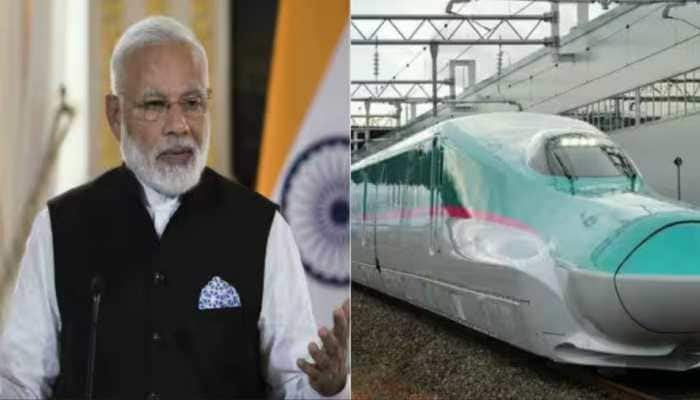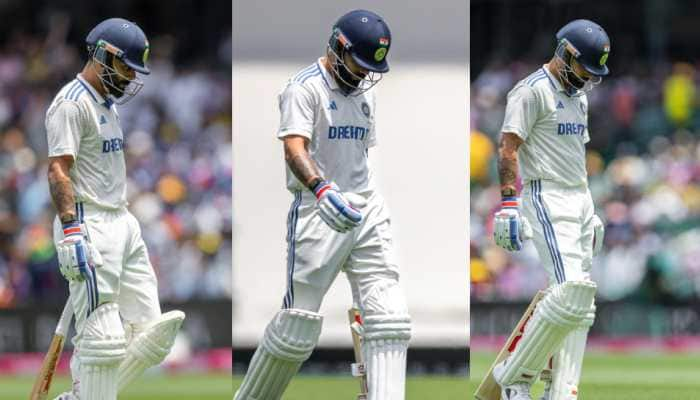Vikram Kirloskar vents his ire on poor road infrastructure in India
Vice Chairman of Toyota Kirloskar Motors and now ex-president of SIAM Vikram Kirloskar talks to ZEEGNITION Editor-in-chief Adil Jal Darukhanawala regarding the growth of the auto industry, poor road infrastructure and other important issues besides offering valuable insight into Toyota’s plans for India .
Trending Photos
)
ZEEGNITION/Adil Jal Darukhanawala
Vice Chairman of Toyota Kirloskar Motors and now ex-president of SIAM Vikram Kirloskar talks to ZEEGNITION Editor-in-chief Adil Jal Darukhanawala regarding the growth of the auto industry, poor road infrastructure and other important issues besides offering valuable insight into Toyota’s plans for India .
Excerpts from the interview:
Adil Jal Darukhanawala: There has been a lot of churn going on in the minds, how do you address this churn because I don’t think everyone and anyone can put a finger on A or B or C issue pertaining to the automotive industry growth and everyone thinks that growth has to be in double-digits always. What’s your view on this absolute fact of life?
Vikram Shreekant Kirloskar: See, the auto industry here is very unique in the world. We have almost every player in the world manufacturing in India. We have maybe the most competitive small car sector in the world and nowhere in the world do we have so many models. Frankly, I’ve seen pricing of vehicles in other parts of Asia, Southeast Asia or Middle East, is much higher than what we have here. If I remove the taxes, I’m looking at without taxation everywhere, so we are working in an extremely competitive economy with an extremely competitive customer.
Adil Jal Darukhanawala: But isn’t competition a good thing Vikram?
Vikram Shreekant Kirloskar: The competition has been very good for us because you look at us, last year we exported 600,000-700,000 cars and this year it’s increasing by another 15-20%. This has resulted in us being one the most competitive carmakers in the world. 10-15 years ago we could never imagine that we would be a super carmaker in the world with high quality products accepted all over the world.
Adil Jal Darukhanawala: So why is there this sense of dismay in the minds of so many segments of our society? Is it a problem of communicating this?
Vikram Shreekant Kirloskar: I think the market has lots of headroom; we’re going through ups and downs of growth. We’re used to sometimes recording 15-20% of growth. Those are not sustainable in the long run. You know we’re having 6, 7 or 8% growth rate which companies around the world would give their right arm for. So I think we have to watch it and figure out how to manage the 6-7% growth, look for new opportunities outside India and be prepared when the GDP rate starts growing in double-digit numbers; 8,9-10% India is definitely going to grow into sooner or later.
Adil Jal Darukhanawala: As I see it, in this year we have got some segments doing good considering that we had a very lean, flat couple of last years; some segments have fizzled out and some segments still have the potential for growth but someone has not taken that critical final step to burst that ceiling.
Vikram Shreekant Kirloskar: See, like two wheelers, people have been worried by the flat 2-wheeler growth but I’m not so worried. I think that there is a structural change in the way the government has been dealing with these various schemes, which are affecting the rural areas, the method of dealing with schemes has been different and perhaps there is less leakage in those schemes and I think because of that there is perhaps less of a demand in two wheelers in the rural market. But I think this will correct itself. There is a strength in the rural market, there’s the size of the rural market which is growing and it will correct itself. So I’m not so concerned. What was worrying me more was the commercial vehicles sector because commercial vehicles are capital goods. And the way the CV’s went was really saying that the infrastructure was not growing and the investments and capital assets in the country was not happening. But now you see the CV start to grow again and I hope its an indication that the infrastructure growth has started, that people are investing in the big country capital assets and I think that’s a positive sign.
Adil Jal Darukhanawala: It’s good that you’ve touched on this infrastructure issue. Our Honourable Minister has given a track record or a potential track record of doing 30km of roads per day; I think it’s still stuck on 10-11km per day. How do you reconcile this, what you speak and what’s actually unfolding on the ground?
Vikram Shreekant Kirloskar: If you look at what are the issues with road construction, what’s the biggest issue on physical infrastructure in India? It’s land acquisition. If you look at the mobile-telephone infrastructure, we’ve gone to, I don’t know 800-900million mobile users? It’s become the biggest in the world so fast and at the lowest cost because it doesn’t require the kind of land that the old kind of telephones required. Or the IT industry; it doesn’t require the kind of land that the manufacturing industry requires. I think land acquisition is a key issue even for constructing roads. If you look at why roads are held up, if you look at the nice road around Bangalore, why is the full circle not made? It’s because of the litigation. It’s not because they’re not able to build or don’t have the money or the technology to build a good road. This is the issue. I’m highly disappointed on the land bill.
Adil Jal Darukhanawala: Is Vikram Kirloskar disappointed or is SIAM disappointed?
Vikram Shreekant Kirloskar: All of us are disappointed, SIAM is disappointed, and I am definitely personally disappointed. How do you get rural people rich? That’s the most important thing. How do you get them jobs? If they are able to transfer their goods out. If you can’t build roads down to the rural areas, can’t provide electricity and power and education in the rural areas, how can you do it without an infrastructure for communication? You can’t just do it on the telephone, you can’t ship apples over telephone, or bananas or onions or whatever. You need the roads and if you say you can’t acquire land to build a road means you’re destroying the life of the village for its lifetime.
Adil Jal Darukhanawala: One problem which is really bothering business across sections, not just automotive, is the slow down in China, the over capacity there and the propensity of the Chinese to dump at whatever variable costs. It doesn’t directly affect OEMs but it does concern the component sector that is thriving in our country.
Vikram Shreekant Kirloskar: See the slowing down of the Chinese economy with its huge capacity is going to affect the whole world. One big thing that I think India has as a strength is its banking sector or its finance sector which is fundamentally very strong. Our borrowing as a percentage of our GDP is very low compared to a lot of countries. Also in general, Indians buy Indian to some extent, they have an affinity to Indian made products if the quality is good and quality everywhere is improving. So yes, we’re going to have these ups and downs, we’re going to be hit by what happens in China or if US eases up etc. as we are an open market, but in the long run, I am fundamentally pro-India.
Adil Jal Darukhanawala: Okay let’s remove your SIAM cap and put your Toyota cap on. We had Uchiyamada San come here and he is the father of the hybrids. And you have just got a Camry Hybrid which is one of the finest cars but if the hybrid technology has to proliferate in India, it needs to get down to an affordable price point like Maruti showed with its Ciaz SHVS.
Vikram Shreekant Kirloskar: [Laughing] But you know that it’s a mild hybrid
Adil Jal Darukhanawala: Whatever it may be! When you get a mild hybrid and still it’s cheaper than its predecessor, I think that’s a big revolution in the mind. When is Toyota trying to get this revolution to attain critical mass?
Vikram Shreekant Kirloskar: Well, let me tell you, the level of hybrid technology we are using is completely different than anything else, that’s number one. Number two, I think we are seeding the market and seeing whether we can handle the technology itself in terms of maintenance, in terms of life, in terms of dealership performance, etc. But as a strategy, what we’ve been doing for the last few years is that we’re concerned for our existing one million customers. People are saying ‘why aren’t you making small cars, this car, that car.’ We’re just looking at our one million customers; how can we make sure we retain them, look after them and they don’t see a fall in the value of what they have. That’s our first concern. So you’ll see our product strategy as we go ahead more aimed at that. Certainly we have to meet CAFÉ regulations coming up and the first set of CAFÉ regulations perhaps, all of us in India are going to meet, with difficulty but we are going to meet them. But the next set of regulations, are very stringent and cannot be met with the existing product line even evolving. It is not going to work out that easily for people because along with that there is Euro 5, Euro 6 coming up, there’s a whole lot of change; there’s a whole change game going on. So at that point I think you’ll see a lot more stuff as we start figuring out, what is our strategy for the next round of CAFÉ regulations, Euro 5, Euro 6, next round of safety regulations, I think once we are clear as to how to push that in with our product line-up, I think you’ll start seeing better products. I’ll also start seeing a clearer picture of what it’s going to look like.
Adil Jal Darukhanawala: Okay one final question and this is personal as well, one of the finest cars in the market is the Innova. By far. When is the next Innova coming?
Vikram Shreekant Kirloskar: [Laughing] Enjoy the Innova, it’s always going to be there!
Adil Jal Darukhanawala: So that was Vikram Kirloskar. The direction is clear from him as far as issues concerning the automotive industry is concerned and he is very cagey about his best-seller! He better be because I don’t think there’s still another version which can ever replicate the Innova so till that time, yes, Toyota is really going smoothly.
Stay informed on all the latest news, real-time breaking news updates, and follow all the important headlines in india news and world News on Zee News.
Live Tv







)
)
)
)
)
)
)
)
)
)
